Basketball, a beloved sport embraced by fans worldwide, has a captivating history filled with remarkable moments, iconic players, and cultural impact.
From its humble beginnings in a gymnasium in Massachusetts to its global presence today, basketball has evolved into a sport that unites people across borders.
In this blog post, we delve into ten basketball history facts that highlight significant milestones, legendary players, and the game’s evolution over time.
So, join us as we explore the fascinating journey of basketball, celebrating its rich legacy and its enduring impact on sports and popular culture.
10 Basketball History Facts That Every Basketball Lover Should Know
If you are curious about basketball history, you should learn about the following most significant historical facts about basketball.
1. The Invention of Basketball
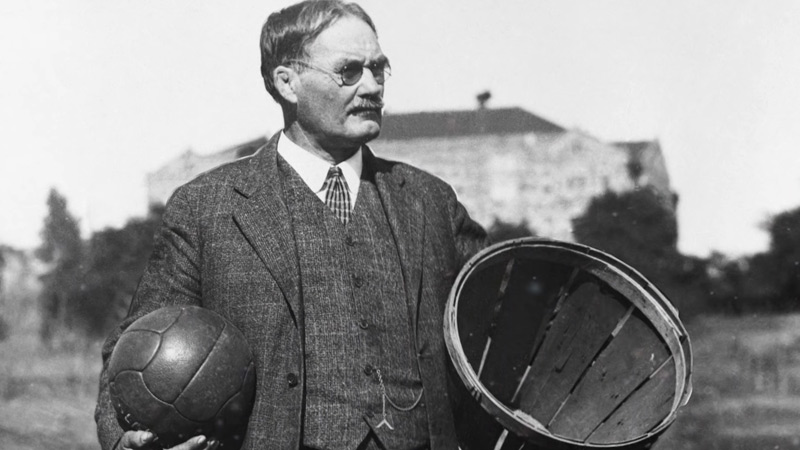
Basketball, one of the most popular sports in the world, has a fascinating history that dates back to the late 19th century. It all began with Dr. James Naismith, a Canadian physical education instructor, who invented the game in December 1891.
Naismith’s goal was to create a new indoor game to keep his students active during the winter months. Little did he know that his creation would go on to captivate millions of people worldwide.
Dr. Naismith was tasked with developing a game that could be played indoors and would provide an engaging physical activity. With limited resources and a simple yet brilliant idea, he created the foundations of basketball.
Naismith nailed two peach baskets to the elevated track in the gymnasium at the International YMCA Training School in Springfield, Massachusetts.
The objective of the game was to throw a soccer ball into the opposing team’s basket. It was a game that required skill, teamwork, and strategy.
In those early days, basketball had a different set of rules compared to the modern game. For instance, dribbling was not initially allowed, and the players could only pass or shoot the ball.
Additionally, the baskets had no holes in the bottom, so after each successful shot, a player had to climb up and retrieve the ball manually.
2. The Birth of the NBA:
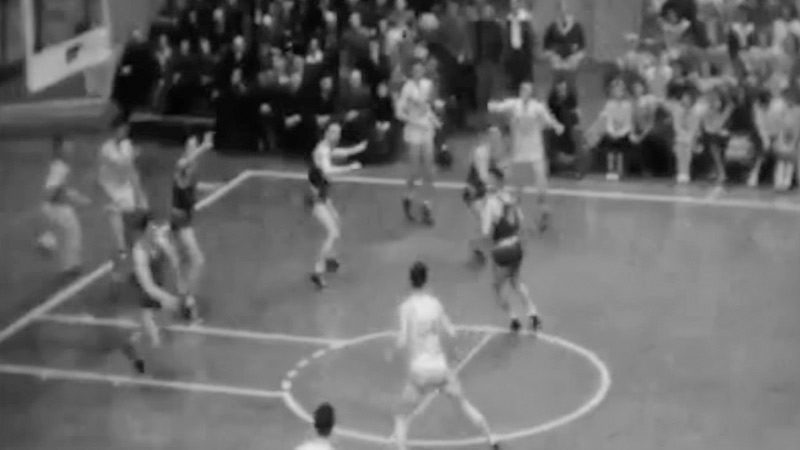
Basketball gained rapid popularity, and professional leagues started to emerge. On June 6, 1946, the Basketball Association of America (BAA) was founded.
It started with 11 teams: Boston Celtics, Chicago Stags, Cleveland Rebels, Detroit Falcons, New York Knickerbockers, Philadelphia Warriors, Pittsburgh Ironmen, Providence Steamrollers, St. Louis Bombers, Toronto Huskies, and Washington Capitols.
The BAA aimed to create a platform for professional basketball and enhance its appeal to a wider audience.
In 1949, the BAA merged with its rival league, the National Basketball League (NBL), forming the National Basketball Association (NBA).
The merger brought together some of the best teams and players from both leagues, creating a stronger foundation for professional basketball. The NBA continued to grow and evolve, adding new teams and expanding its fan base.
Over the years, the NBA has become synonymous with elite basketball talent, intense competition, and thrilling games. It has seen legendary players like Michael Jordan, Magic Johnson, Larry Bird, Kareem Abdul-Jabbar, and Kobe Bryant grace its courts.
The league’s global reach and influence have also expanded significantly, with fans from all corners of the world following the NBA and its stars.
3. The First Slam Dunk
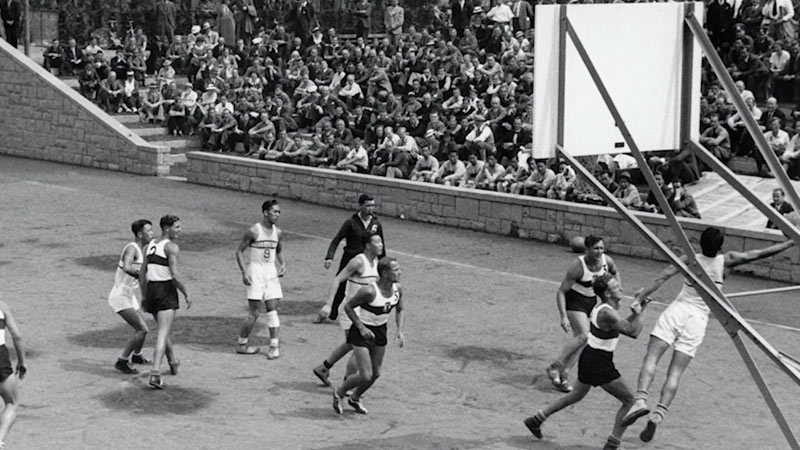
The slam dunk is one of the most electrifying plays in basketball, showcasing a player’s athleticism and power. However, this iconic move was not always part of the game.
In fact, the first recorded slam dunk in basketball history didn’t occur until December 29, 1967, during an American Basketball Association (ABA) game.
Connie Hawkins, playing for the Pittsburgh Pipers, executed the first-ever slam dunk in a professional game.
Hawkins, a 6’8″ forward, possessed incredible leaping ability and was known for his highlight-reel plays. His dunk in that game forever changed the way the game was played and appreciated.
It opened the floodgates for future players to showcase their aerial skills and add a new level of excitement to the sport.
Since then, the slam dunk has become an integral part of basketball, captivating fans with high-flying acrobatics. Players like Michael Jordan, Julius Erving, Shaquille O’Neal, and Vince Carter are renowned for their gravity-defying dunks, which have become iconic moments in basketball history.
Today, the slam dunk is not only a display of athleticism but also a symbol of individual expression and creativity on the court.
4. The Greatest Scorer
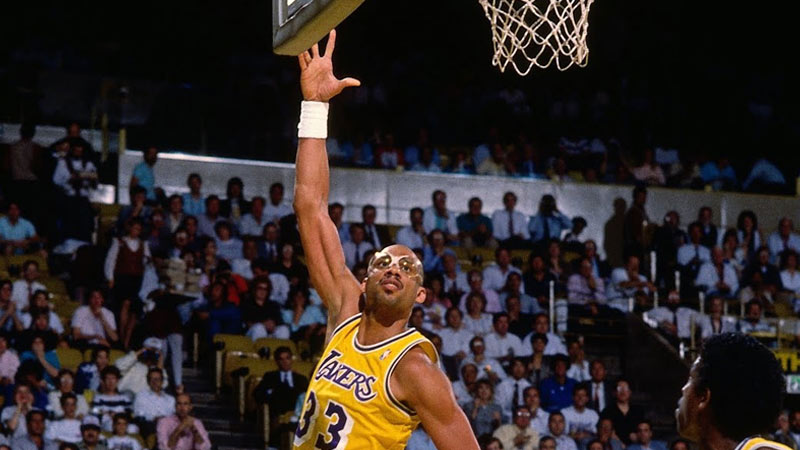
Scoring is a fundamental aspect of basketball, and throughout history, there have been exceptional players who have amassed remarkable point totals.
Kareem Abdul-Jabbar, formerly known as Lew Alcindor, holds the distinction of being the NBA’s all-time leading scorer. During his illustrious 20-year career (1969-1989), Abdul-Jabbar scored a record-breaking 38,387 points.
Abdul-Jabbar’s scoring prowess was evident from his collegiate days at the University of California, Los Angeles (UCLA), where he dominated the competition. His skill set and physical attributes made him virtually unstoppable on the court.
Standing at 7’2″ with an extraordinary wingspan, Abdul-Jabbar developed an unstoppable signature move known as the skyhook in basketball. This move, where he extended his arm high above the defenders and released a hook shot, was virtually impossible to block.
Abdul-Jabbar’s longevity and consistency were key to his scoring success. Throughout his career, he showcased exceptional footwork, shooting touch, and basketball IQ.
His ability to score from inside the paint and mid-range made him a nightmare for opposing defenses. Abdul-Jabbar’s remarkable achievements also included six NBA championships, six Most Valuable Player (MVP) awards, and 19 All-Star selections.
Even after retiring, Abdul-Jabbar’s scoring record remains untouched, a testament to his greatness as a scorer.
His legacy extends beyond statistics, as he was a true ambassador for the game, displaying sportsmanship, intelligence, and social activism throughout his career.
Abdul-Jabbar’s impact on basketball is undeniable, and his scoring record solidifies his place among the all-time greats of the sport.
5. The Dream Team
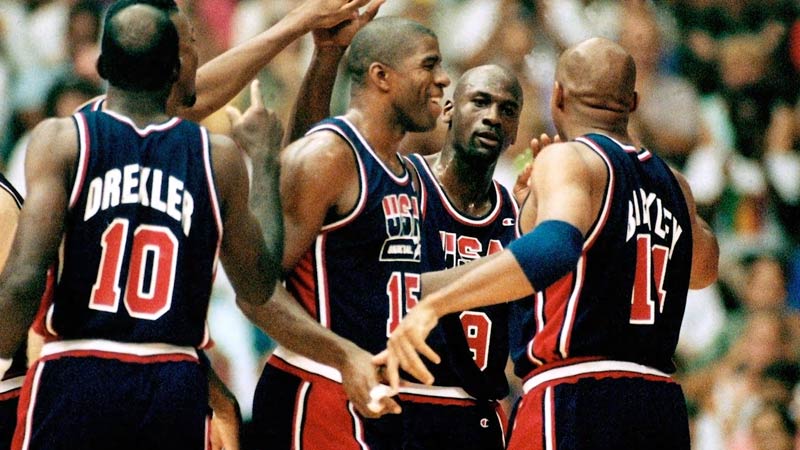
The 1992 United States Olympic basketball team, famously known as the “Dream Team,” is widely regarded as the greatest basketball team ever assembled.
The team consisted of 12 exceptional NBA players who captured the world’s imagination with their skill, dominance, and sheer star power.
The Dream Team was a result of several factors coming together at the right time. In 1989, FIBA (International Basketball Federation) changed its rules to allow professional players to participate in international competitions.
This opened the door for NBA players, who were previously ineligible due to amateurism requirements, to represent their countries in the Olympics.
The United States Basketball Federation (now known as USA Basketball) took full advantage of this rule change and assembled an unprecedented roster of talent for the 1992 Olympics in Barcelona, Spain.
The Dream Team featured a remarkable lineup that included Michael Jordan, Magic Johnson, Larry Bird, Charles Barkley, Karl Malone, Patrick Ewing, Scottie Pippen, John Stockton, David Robinson, Clyde Drexler, Chris Mullin, and Christian Laettner.
The Dream Team’s impact on basketball and popular culture was profound. Their sheer dominance was evident in every game they played, winning their Olympic matches by an average of 43.8 points per game.
The team’s style of play, characterized by precision passing, fast breaks, and highlight-reel plays, captivated fans around the world and introduced the NBA to a global audience.
The Dream Team’s cultural impact extended beyond the court. Their presence in the Olympics elevated the popularity of basketball internationally and paved the way for the globalization of the sport.
Players like Michael Jordan and Magic Johnson became global icons, and basketball started to transcend borders, gaining a foothold in countries that previously had little exposure to the game.
The Dream Team’s legacy continues to inspire future generations of basketball players and remains a symbol of excellence and camaraderie in the sport.
Their performance in the 1992 Olympics was a watershed moment that elevated basketball to new heights and solidified the NBA’s status as a global phenomenon.
6. The Shot Heard ‘Round the World
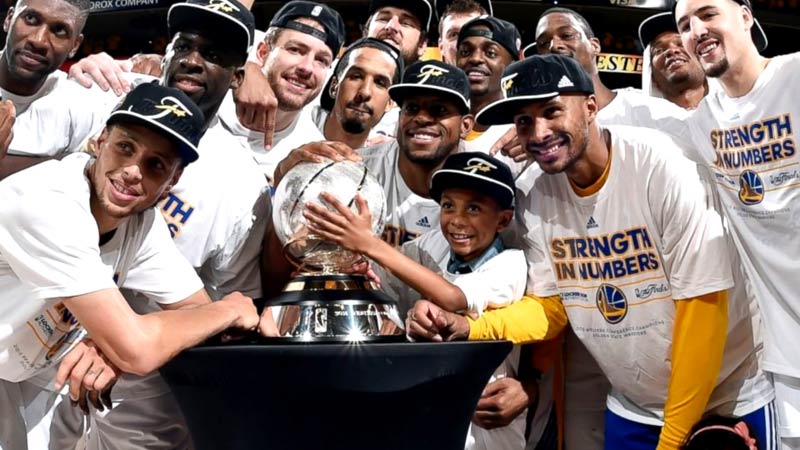
One of the most iconic moments in basketball history occurred during the 1982 NCAA Championship game between the University of North Carolina Tar Heels and the Georgetown Hoyas.
With just 17 seconds remaining on the clock and the game tied at 63-63, North Carolina’s freshman guard, Michael Jordan, hit a jump shot from the left baseline, famously known as “The Shot Heard ‘Round the World.”
Jordan’s clutch shot propelled North Carolina to a 65-63 victory and secured the program’s second national championship under head coach Dean Smith.
The shot showcased Jordan’s ability to thrive under pressure and foreshadowed his future greatness in the NBA. It remains etched in basketball lore as a defining moment for both Jordan and the sport as a whole.
7. The Rivalry of Magic vs. Bird
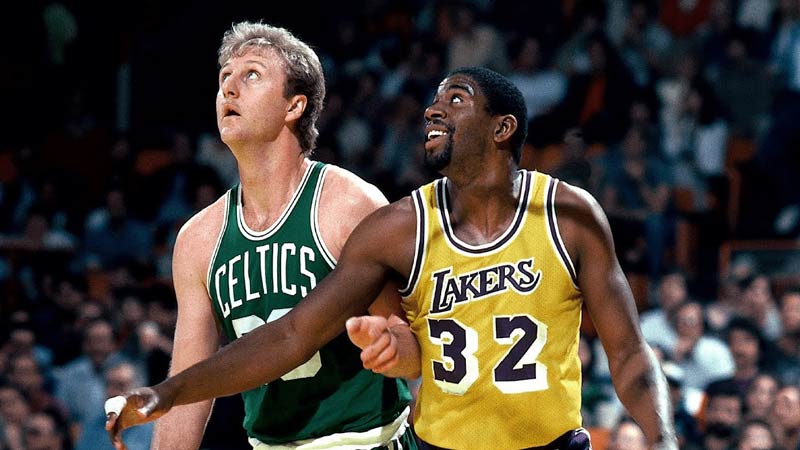
The rivalry between Magic Johnson and Larry Bird is one of the most storied in basketball history. Their fierce competition began in college when Johnson’s Michigan State Spartans faced Bird’s Indiana State Sycamores in the 1979 NCAA Championship game.
Dubbed the “Game of the Century,” the matchup drew record-breaking television ratings and captivated the nation. Johnson’s Spartans emerged victorious, but this was just the beginning of their rivalry.
Johnson and Bird would go on to face each other multiple times in the NBA Finals throughout the 1980s. Their contrasting styles of play and team success fueled the rivalry. Magic, the charismatic point guard for the Los Angeles Lakers, epitomized the fast-paced “Showtime” style of basketball.
Bird, the gritty forward for the Boston Celtics, embodied the blue-collar work ethic and versatile skill set.
Their rivalry transcended the court and became a cultural phenomenon. The Magic vs. Bird matchups revitalized the NBA, attracting new fans and elevating the league’s popularity.
Their head-to-head battles showcased their individual brilliance and their ability to uplift their teammates. Johnson and Bird’s rivalry not only shaped the NBA of the 1980s but also left a lasting impact on the game’s history.
8. The Legend of Wilt Chamberlain
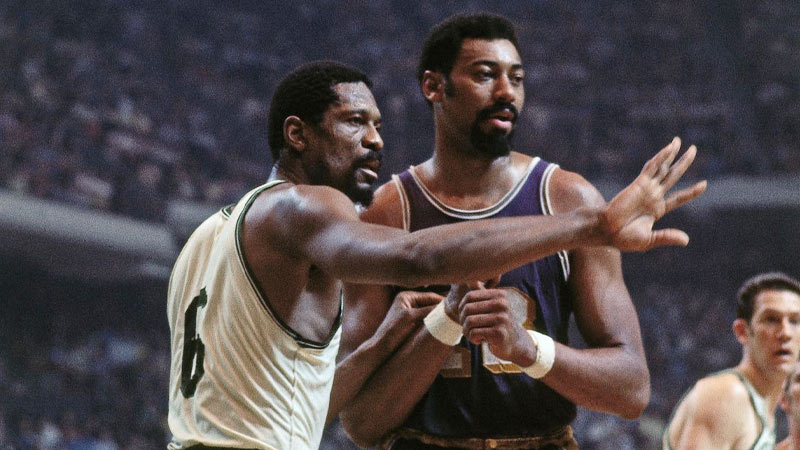
Source: dukebasketballreport.com
Wilt Chamberlain is widely regarded as one of the greatest basketball players of all time. Standing at an imposing 7’1″ and possessing unmatched athleticism, Chamberlain dominated the game during his era.
His statistical achievements remain legendary and solidify his place in basketball history. Chamberlain’s most remarkable feat came on March 2, 1962, when he scored 100 points in a single NBA game.
Playing for the Philadelphia Warriors against the New York Knicks, Chamberlain accomplished what no player had done before or since. His scoring outburst shattered previous records and set a mark that still stands today.
Beyond his historic scoring performance, Chamberlain amassed numerous accolades throughout his career. He won two NBA championships, four regular-season MVP awards, and seven scoring titles.
Chamberlain’s dominance in the paint was unmatched, and he holds the record for the most rebounds in a single game (55) and the highest career rebounding average (22.9 per game).
Chamberlain’s impact extends beyond statistics. His larger-than-life personality, combined with his on-court achievements, elevated the popularity of basketball during the 1960s.
Chamberlain’s legacy as a dominant force and an ambassador for the game continues to inspire generations of basketball players.
9. The Evolution of the Three-Point Shot
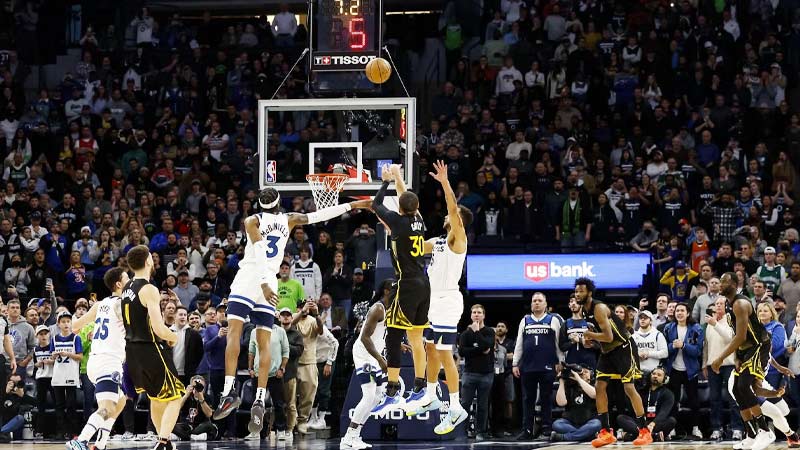
Source: sportskeeda.com
The three-point shot is now an integral part of basketball strategy, but it wasn’t always a part of the game. The adoption and evolution of the three-point line revolutionized basketball and transformed offensive strategies.
The concept of a three-point shot was first introduced by the American Basketball League (ABL) in 1961, but the ABL disbanded after just one season. It wasn’t until 1979 that the three-point line made its debut in the NBA.
The introduction of the line added a new dynamic to the game, rewarding teams and players for shooting from long range.
Over the years, the three-point shot has become increasingly important in basketball strategy. Teams have developed offensive systems built around three-point shooting, stretching defenses, and creating opportunities for open shots.
The reliance on analytics and the emphasis on efficiency have further amplified the importance of three-point shooting in modern basketball.
The three-point shot has also given rise to a new breed of players known as “sharpshooters” or “snipers.” These players specialize in long-range shooting and have become instrumental in teams’ success.
Superstars like Stephen Curry, Ray Allen, and Reggie Miller have redefined the limits of long-range shooting and set new records for three-pointers made.
10. The Globalization of Basketball
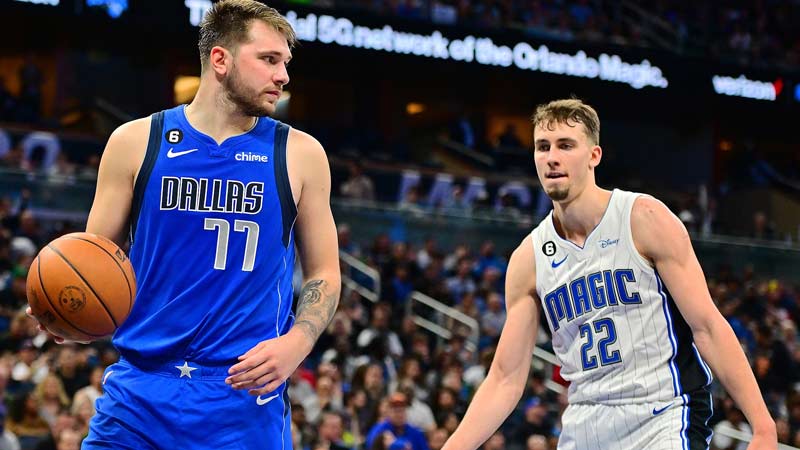
Source: nba.com
Basketball’s global reach and popularity have grown exponentially over the years, transforming it into a truly global sport.
The globalization of basketball can be attributed to various factors, including the participation of international players in the NBA, the success of international teams in major competitions, and the increased accessibility to basketball through media and technology.
The influx of international players in the NBA has had a significant impact on the sport’s global expansion.
Players like Dirk Nowitzki (Germany), Hakeem Olajuwon (Nigeria), Yao Ming (China), and Pau Gasol (Spain) brought their unique skills and international fan bases to the NBA, showcasing the talent and diversity of basketball on a global stage.
International success in major competitions, such as the FIBA World Cup and the Olympics, has further fueled the growth of basketball worldwide.
The rise of powerhouse national teams from countries like the United States, Spain, Argentina, and Serbia has drawn attention and fostered a competitive environment on the global basketball stage.
Advancements in media coverage and technology have also played a crucial role in popularizing basketball around the world.
Live game broadcasts, internet streaming, and social media platforms have made the sport more accessible than ever before, allowing fans from different countries to follow their favorite teams and players in real time.
The globalization of basketball has led to increased participation at all levels, from grassroots programs to professional leagues in different countries.
The sport’s ability to transcend cultural boundaries and unite people through a shared love for the game continues to drive its worldwide growth.
These ten basketball history facts provide a glimpse into the rich and diverse tapestry of the sport. From its humble beginnings to its global reach, basketball has captivated the hearts and minds of millions, leaving an indelible mark on sports history.
As the game continues to evolve, it will undoubtedly create new legends and unforgettable moments for future generations to cherish.
FAQs
Who invented basketball, and when did it start?
Basketball was invented by Dr. James Naismith, a Canadian physical education instructor, in December 1891. Seeking an indoor game to keep his students active during the winter, Naismith devised the sport by hanging peach baskets and using a soccer ball.
How did the NBA come into existence?
The NBA (National Basketball Association) originated from the merger of the Basketball Association of America (BAA) and the National Basketball League (NBL) in 1949.
The merger brought together teams from both leagues, creating a stronger foundation for professional basketball.
What was the significance of the “Dream Team” in basketball history?
The “Dream Team” refers to the United States men’s basketball team that competed in the 1992 Olympic Games in Barcelona.
Comprised of legendary NBA players such as Michael Jordan, Magic Johnson, and Larry Bird, the team’s dominance and global popularity elevated basketball to new heights and paved the way for its globalization.
Who holds the record for the most points scored in a single game?
Wilt Chamberlain, an iconic basketball player, scored an astounding 100 points in a single NBA game on March 2, 1962. Chamberlain’s record remains unbroken and stands as a testament to his exceptional talent and dominance in the sport.
How has the three-point shot impacted the game of basketball?
The three-point shot, introduced to the NBA in 1979, has transformed basketball strategy and offense. It has encouraged teams to develop strategies focused on long-range shooting, stretching defenses, and creating new opportunities.
The three-point shot has also given rise to a new generation of players known for their sharpshooting abilities.
Wrapping Up
Basketball’s history is a tapestry woven with innovation, legendary figures, and captivating moments. From Dr. James Naismith’s invention of the game to the cultural impact of the “Dream Team” and the global expansion of basketball, the sport has left an indelible mark on the world of sports.
The evolution of the game, the iconic rivalries, and the remarkable achievements of players like Wilt Chamberlain and Michael Jordan have shaped the sport into what it is today.
As basketball continues to captivate fans around the world, it is worth celebrating its rich history and the profound impact it has had on the lives of athletes and fans alike.
With each passing season, basketball’s legacy grows, inspiring future generations and solidifying its place as one of the most beloved and exhilarating sports in history. Have a nice day.







